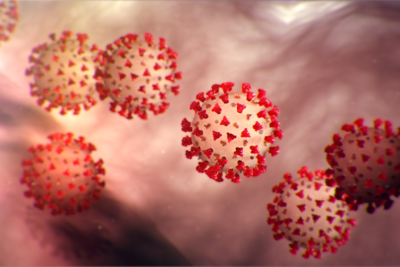Bhubanananda Sahu
World Health Organisation (WHO) has declared COVID-19 a pandemic and called upon the world to deal with the disease seriously. Almost all nations are faced with problems the pandemic has begun posing since the start of this year. As is well-known, the virus spread from Hubei province in China in December last. COVID-19 is an enveloped positive single-stranded large RNA virus. It’s a spherical virion with a surface projection resembling the solar corona.
This virus succeeded in making its transition from animals such as bat and pangolin to the humans on the Huanan seafood market in Wuhan, China. Some of the affected individuals showed no symptom but others displayed fever, cough, nasal congestion, fatigue and other signs of upper respiratory tract infection. A study by University of California published in Science Daily in March said coronavirus can stay on up to three hours in air, upto 4 hours in copper, upto 24 hours on cardboard and 2 to 3 days on plastic and stainless steel. New studies reveal that the only transmission is by close contact with the sick people.
The eyes, nose and mouth are the points for the virus to enter the body’s air tract, and go into the lungs. Once it reaches the lungs, it replicates profusely. The lung’s epithelial cell has a bait called angiotensin converting enzyme-2 (ACE2), which invites the spike of the coronavirus to bind. Once this binds, it easily sneaks into the cell and causes damage. Therefore, we should not touch the eyes, nose and mouth without washing our hands in soap water. WHO guideline suggests washing the hand in soap for at least 20 seconds.
As the virus is spread by contact, crowd formations need be avoided. As it is mostly asymptotic, we cannot identify the infected people. Therefore, it is mandatory to cover our nose and mouth when going out of our homes.
The Centre for Infectious Disease Dynamics at Pennsylvania state university has stated that coronavirus tends to be associated with cold. Virus spread through respiratory droplet is more likely to see spikes in transmission rate during winter conditions. Virus droplets are better at staying afloat when the air is cold and dry. When the air is humid and warm, the virus droplet falls to ground more quickly and makes the transmission harder. The coronavirus has spike glycoprotein on its surface which has the affinity to bind to the ACE2 found in the lower respiratory tract of the humans. This is a critical step of virus entry to lung cells.
Clinical trials are going on around the world to develop a drug or vaccine to combat coronavirus. Small molecular, recombinant antibody and plasm therapy against the coronal virus are under development to stop the replication or infection in lungs respectively.
One of the surprising findings about COVID-19 is this. Geneticist Dr. Peter Forster from Cambridge University, UK, has found in his research that there are three different strains of coronavirus. These are type A, type B and type C. Type B and Type C are the mutated versions of Type A. Type B originated from Type A and type C from type B.
He noted that type B has affected a majority of the people in East Asia, particularly in Wuhan. Type A was what hit most in America and Europe. Type C is prevalent in France, Italy, Sweden, England, California, Brazil, Singapore, Hong Kong, Taiwan and South Korea.
Notably, a Chinese researcher first submitted the genome sequence of coronavirus on December 24 last, which had affected people in Wuhan, and this was the strain Type B, the original strain. Therefore, he predicted that the virus infection started not in December but earlier than that — in September 2019 — in China. Scientist Dr. Harm Van Bakel, of the Icahn School of Medicine at Mount Sinai, New York University, revealed that the first traveler to bring the virus to the New York city was from Europe, not Asia.
This might, likely, absolve China of the charge from the US that the Asian giant spread it in the US, perhaps intentionally. Notably, it was China, on the other hand, first accused US soldiers of planting the virus in Wuhan. Many theories are in circulation The real truth might never be known.
The writer is a Research Scientist with the University of Massachusetts Medical School, USA.







































